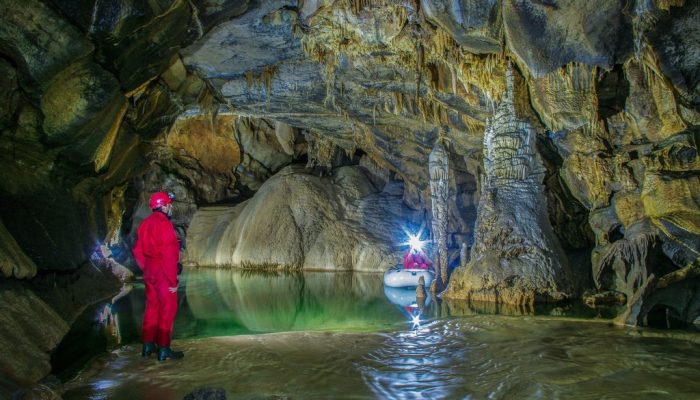
Many of us seek adventures, new experiences and sights in far flung places, but very often there are beautiful wonders right on our doorstep. In today’s post, Barbara Zambelli Azevedo highlights how the promotion of local geological regions can be a valuable and effective way to encourage development and instil a sense of pride in local communities.
Plato said in the Allegory of the Cave that men could only be free from ignorance when they leave the shadow world and see the real world outside. For me, caves have the opposite meaning. My first time in a cave at the end of 2011 changed me forever. To see the beauty hidden in the dark, countless endogenous species and curious formations in such a delicate and unique environment, thrilled me.
I was touched by speleology and I think that other people may feel the same. Even though karst areas are common throughout the world, still many people don’t know anything about caves, nor have they ever been in one. I believe in valorisation and promotion of speleological heritage in karstic areas as a way to promote sustainable territorial development. This could be done combining four different approaches:
Tourism: Implementation of a speleological management plan allowing and regulating public visitation, seeking at the same time the conservation of the cave, its surroundings and its attributes (physical and biological) as well as the transformations it might need to receive the general public. These transformations could be stairs, handrail, lights, bridges and walkways. It is important to consult the local community before starting any kind of business to know if the chosen cave has a special meaning, if it represents a sacred place or it is part of their culture.
Conservation: Conservation practices must be adopted to ensure the preservation of the speleological heritage. Cave guides should come preferably from the local community. They must receive appropriate training and instruction about security during exploration and conservation of the karst. In Brazil we use the motto:
“In a cave nothing is taken away except photographs, nothing is left but tracks and nothing is killed except time.”
Parks: Implementation of parks in areas where caves are concentrated in a given territory. This territory can be at local or regional level, and the park administration takes charge of the preservation and management of the speleological heritage.
Education: Promote local empowerment through science communication and environmental education. As I mentioned before, there are not a lot of people who know about speleology. In this context it is important to assess the knowledge of the local community when it comes to karst, caves and their formation, as well as their unique fauna, the delicate and complex hydrologic system. When a population is aware of its heritage, is more likely they will ensure its preservation.
Finally, it is crucial to highlight that before starting any kind of business regarding speleology, many different interdisciplinary and multidisciplinary studies must be carried on the areas, in order to select the most appropriate ones for developing tourism or any other activities.

Alexandre Barbosa
That’s quite cool! Thanks for sharing!